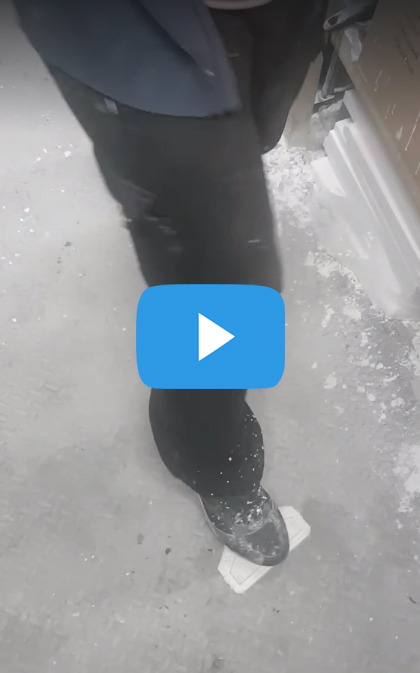FAQS
3D printing tips
I recommend warming up the holes on any chairs for a few seconds using a heat source such as a turbo lighter (an indispensable tool when you are dealing with 3d prints) before push fitting as they will fit more snug and require minimal force, this is a good method for ALL such push fit parts on any PLA prints you might have, such as the magnet slots in our space stations for instance.
I HIGHLY recommend giving any PLA print a good few coats of filler primer spray. we use a brand called 'autotek' and it can be purchased from ebay. Don't be scared to be heavy-handed with this, it will not obscure any detail on the LV427 prints, in fact, I often puddle it on the floor sections to fill out any print gaps and lines. After the first couple of coats, any awkward gaps and print uglies can be filled out using your finger and a fine decorator's filler. I use the Wilkos brand, it is perfect for the job and much cheaper than hobby branded fillers. after this has dried, one final coat of filler primer and you are set for undercoating and painting. You don't have to do this of course but in my long experience of 3d printing and modelling, this technique is what makes a good print into an amazing finished model :)
Resin Vs. Plaster
Here are the pros and cons of resin versus plaster model kits
Resin
Resin tends to have more 'bounce' if dropped and is less likely to shatter than plaster-based products although I HAVE seen resin parts break and they tend to be a little more difficult to repair due to how they break!
In general, resin is tougher than plaster-based products but is, of course, toxic to the environment.
Resin is better to use in situations where you have long thin elements where a brittle material would break too easily. Truthfully, resin is probably overkill for large parts like the temple set but we like to give the option.
Plaster
Plaster, is, of course, a cheaper option. It tends to chip a little easier along the bottom edges (although the introduction of vinyl gaming mats has reduced this problem significantly in our experience) but a quick touch-up with appropriately coloured paint soon sorts it out!
You do have to be more careful when storing of course, being a ceramic plaster-based product it is more brittle so store wrapped in a little bubble wrap when boxed up to avoid any additional damage.
Strangely I have found repairing any broken plaster parts often results in seamless repairs of even painted parts, often much easier than trying to repair and patch up resin! I think this is more to how resin stretches before breaking rather than the clean break of plaster.
Personally, we have no problem with using gypsum-based plaster products for our scenery, when looked after carefully they last just as long as any resin counterpart. We have in fact several scenery pieces made with alpha-grade plaster that are well over 15 years old and still going strong!
One last thing, plaster-based products are in general non-toxic and much better for the environment. Our Alpha grade plaster actually has a resin additive which in general makes it more robust. Plaster also weighs more than resin and we are often told it has a great solid feel to it on the table :)
In short, if you respect and look after your plaster scenery pieces and don't plan on throwing it around then go for the cheaper option and get more with the money you save! That is what I would do! If these large pieces are just sitting on the table then you really shouldn't notice the difference in wear or tear over a resin counterpart
Which has the best detail?
Regarding the actual surface hardness and detail, both materials are pretty much identical in holding fantastic detail (if anything, plaster can hold a superior edge due to the surface hardness).
What is the plaster made from?
Any scenery made from plaster uses one of the highest quality Alpha grade plaster with a resin additive for extra toughness. This is one of the highest rated plaster materials made with a special formula to increase its toughness and durability. It is a very hard, white 100% Alpha plaster for use where high strength and surface hardness and durability are important.
How tough is the plaster?
We wouldn't recommend treating any of your collection like this whatever it is made of, but this video demonstrates that Alpha plaster isn't as delicate as you may think.
I've broken one, what should I do?
Alpha plaster usually repairs seamlessly, I know, I have dropped plenty with my butterfingers and just watched one of my rivet wars trains bounce down the stairs, now repaired with the aid of the good old superglue and a lick of paint...good as new!
Painting
For both resin and plaster products we recommend undercoating with acrylic rattle cans and painting with acrylic paints (I swear by Tamiya, I use these on everything you see on the website)
Our plaster products come pre-sealed so can be literally painted straight out of the box whereas resin requires scrubbing with detergent or soap before painting to wash off any mould release.
How do I paint them?
The scenery is all set for painting, we have already pre-sealed everything! The material takes paint really well but because I work mainly with the airbrush I like to start with a black undercoat and work up through the colours to the brightest, let the black work for you with shading! I have always steered clear of the expensive 'modelling' sprays and found that Matt Black acrylic auto spray is perfectly good for the job and usually much cheaper!

